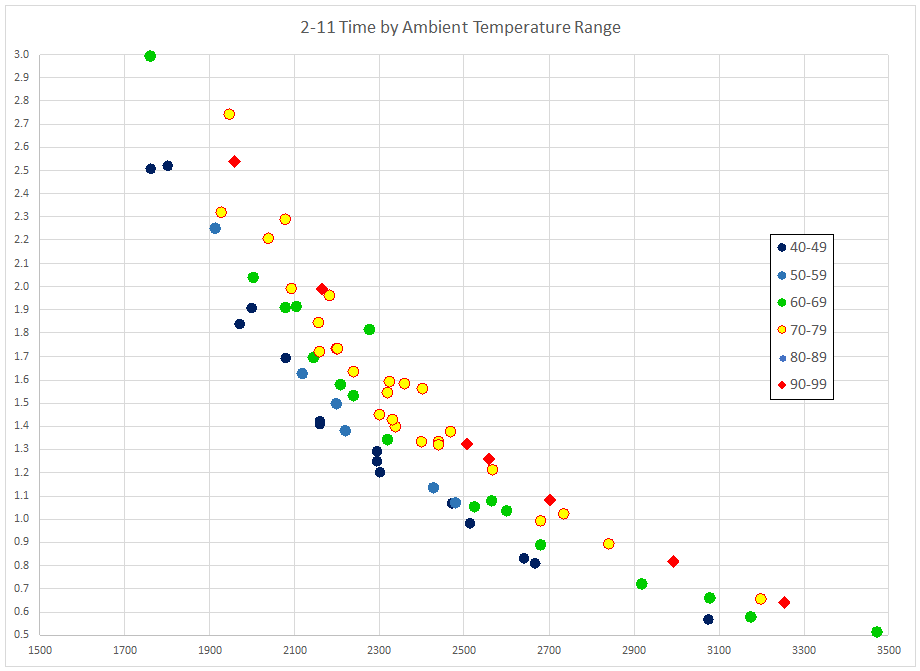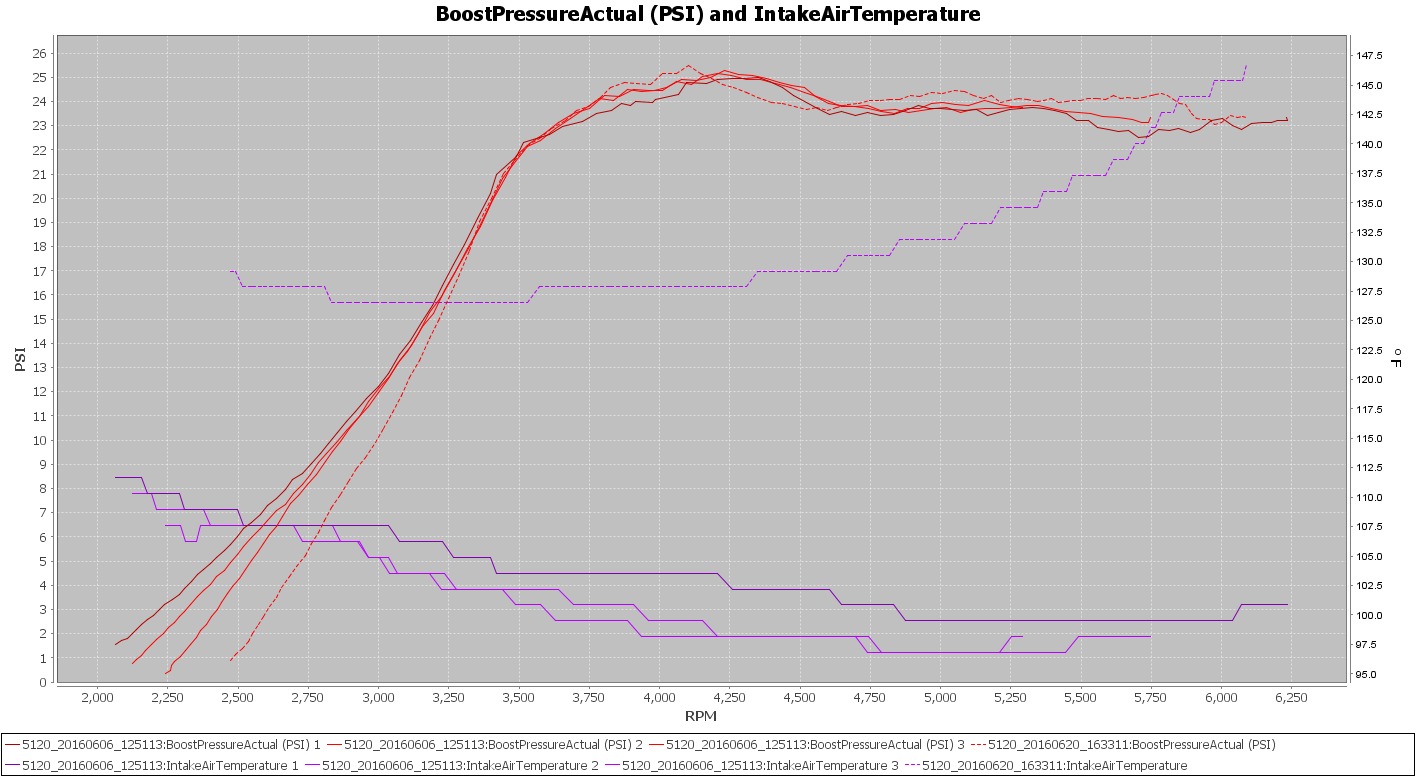I made a few measurements today taking advantage of the high temperatures to collect some comparison data on the TTE550 turbochargers and Silly Rabbit Motorsport SMIC’s.
The first chart is the 2-11 time that illustrates how long it takes for manifold pressure to rise from 2 to 11 psi at various engine speeds.

Today’s temperatures were in the 90’s and I have used a diamond shaped symbol to identify the data points that were recorded today.
There does not appear to be much, if any, additional delay as compared to measurements that were made when the ambient temperatures were in the 70’s.
I’ve not yet logged the car when ambient temperatures were in the 80’s.
A second set of readings I took were of the Intake Air Temperature, without Water-Methanol Injection active.

The comparison data, with WMI active, was recorded when the ambient temperatures were 6 degF cooler.
The SRM IC’s did a good job keeping temps in check even without the WMI, only rising about 20 degF over the pull in 94 degF temps which ended around 6100 rpm. Had I continued to 6500 rpm the temperatures were on track to reach about a 25 degF rise.
For some perspective on a 25 degF rise in IAT, below is a chart showing the air temperature going into the turbo compressor (blue), leaving the turbo compressor (red), and the temperature reading after being cooled by the SRM IC’s at the IAT sensor inside the intake manifold (green).

The air temperature rises inside the turbocharger from 109 degF to 329 degF, and the SRM SMIC pulls the temperature back down to 146F.
An additional observation is that it is very evident the benefit that WMI brings, showing IAT’s that decrease and then hold steady throughout a similar boost-profile pull.
